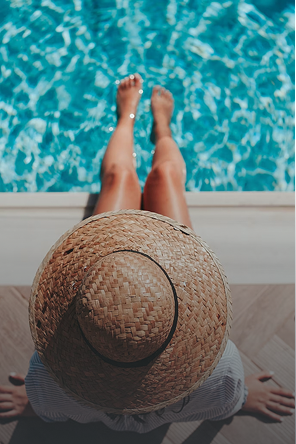Owing the legacy of the rich history and particular location, Rovinj is one of the most attractive and most beautiful towns on the Mediterranean. The city radiates with a unique beauty which attracts visitors from all over the world. Rovinj has charming stone paved streets, overshadowed by old, closely built, houses with particular architectonic touches and roof terraces, renaissance town walls, beautiful churches, galleries under the clear sky, many restaurants offering seafood whose fresh scent pervades every corner of the town, a view on endless blue embellished with 22 islands, each with its particular attraction. All of this represents Rovinj as an inevitable pearl to meet, feel and always return to it.
The old town - Limited space led to the construction of narrow buildings, streets and small town squares. Characteristically designed chimneys are particularly interesting in this town centre .
The town walls and gates - By the 7th century AD, Rovinj was already surrounded by town walls, and later strengthened by the construction of towers. The old town had seven gates, while three still exist today: the Saint Benedict Gate, the Portico and the Holy Cross Gate. A baroque archway called "Balbijev luk", which today serves as the entrance into the old town, was built on the site of the former outer gate in the 17th century.
The church of Saint Euphemia - is a most imposing structure, which bears the name of the patron saint of the town. It dominates the whole old town centre. It was built in the 18th century, while its façade in Venetian-baroque style was added in the middle of the last century. At the top of the sixty-meter-high bell tower stands the copper statue of St. Euphemia, which shows the direction of the wind by turning around its axis.
The Franciscan Monastery – the monastery and the church were built at the beginning of the 18th century. This interesting building, created entirely in the Baroque style, contains a rich library and a fascinating museum of sacral artifacts.
The castle on the island of St. Andrija - a Benedictine Monastery established in the 6th century AD. In the 15th century, the Franciscan order added extensions and it was again refurbished at the end of the 19th century by Baron Hutterodt.
The baptismal font of the Holy Spirit - constructed in a heptagonal shape , it stands as the oldest relic situated in the Lokva Square. The 13th century Romanesque church which houses the font is also interesting because of the detailed carvings of the transenna depicting scenes of Golgotha.
The Rovinj town museum - located in a Baroque building in the town centre, it containes an exhibition of modern art as well as various permanent collections.
The Rovinj aquarium - in this, over a 100 years old, institution, visitors can admire all the wealth of the colorful underwater world of the Adriatic seabed.
The Limska draga fjord - This flooded karstic canyon, which has been declared "a special maritime reserve" and "an area of outstanding natural beauty", is a testimony to the climate changes and geological evolution of Istria. With its emerald green sea and diverse vegetation, this is one of the most beautiful fjords on the Adriatic coast. Romuald's cave is situated here.
Dvigrad - Dvigrad is a medieval town abandoned in the 17th century, and only its ruins remain, of which the most impressive ones are those of the church of St. Sofia. Dvigrad is situated 23 kilometres from Rovinj.
The Palud marsh and the Dvije Sestrice islands - The Palud marsh is a "special ornithological reserve." Its brackish water and lush vegetation attract many bird species, either for nesting or as a stop-over on the way to other destinations. The Dvije Sestrice (Two Sisters) islands are a nesting site for seagulls. Because of its thick holm oak forest, the Gustinja cape is regarded as "a forest vegetation reserve."
The Fantasy Quarry - This is a geological spectacle famous all around the world. It is a unique example of the geological changes connected with karst, of its structure and of the forces that created this abandoned quarry.

